Rukmini’s Annotated Sources: Cop City
Images & Songs Cited
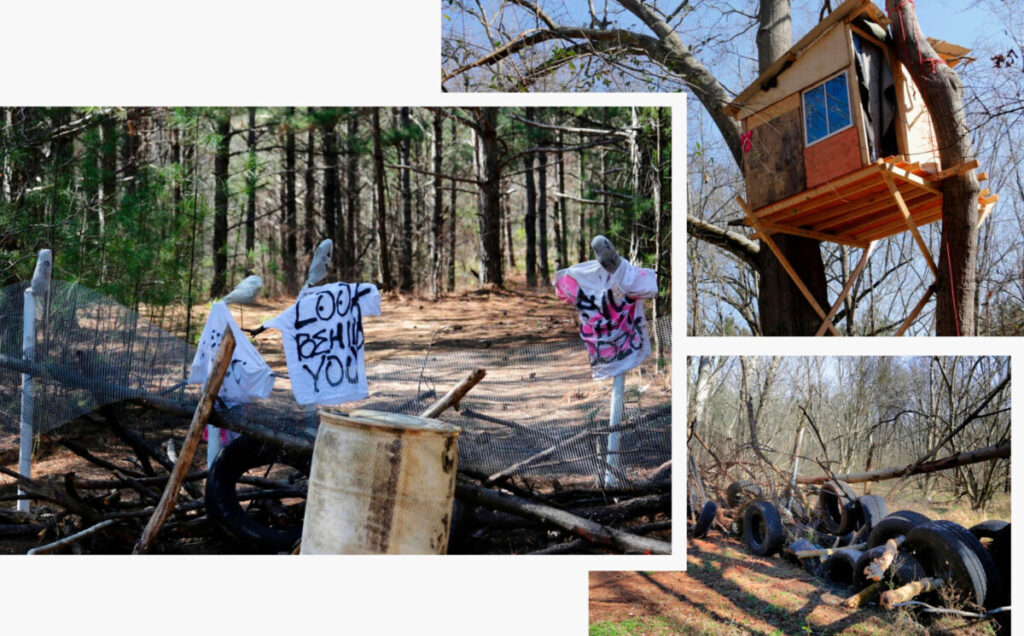
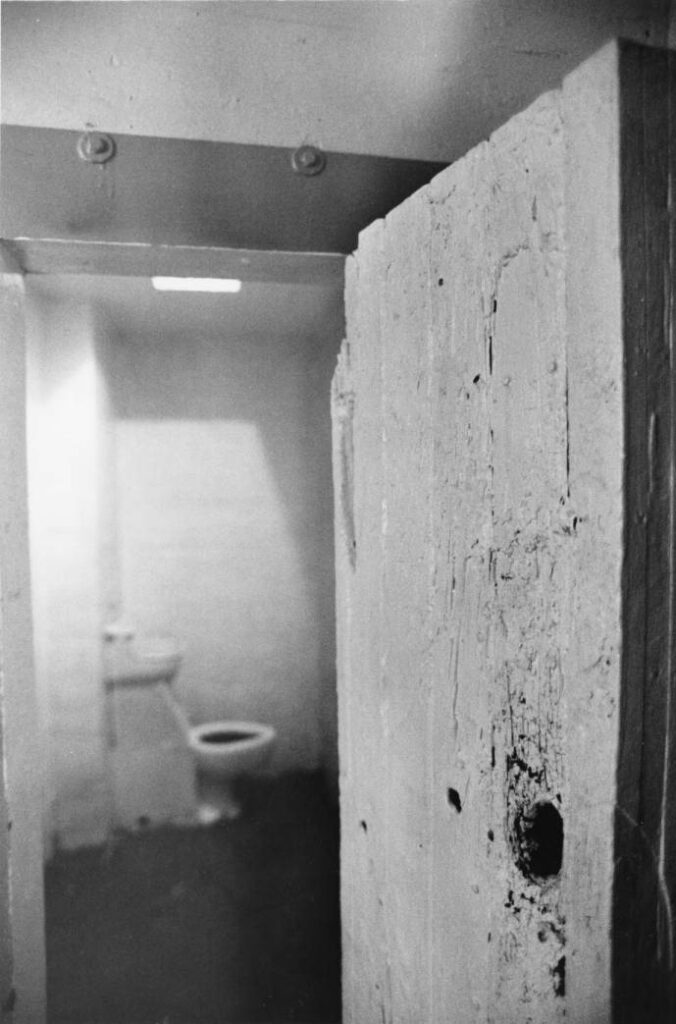
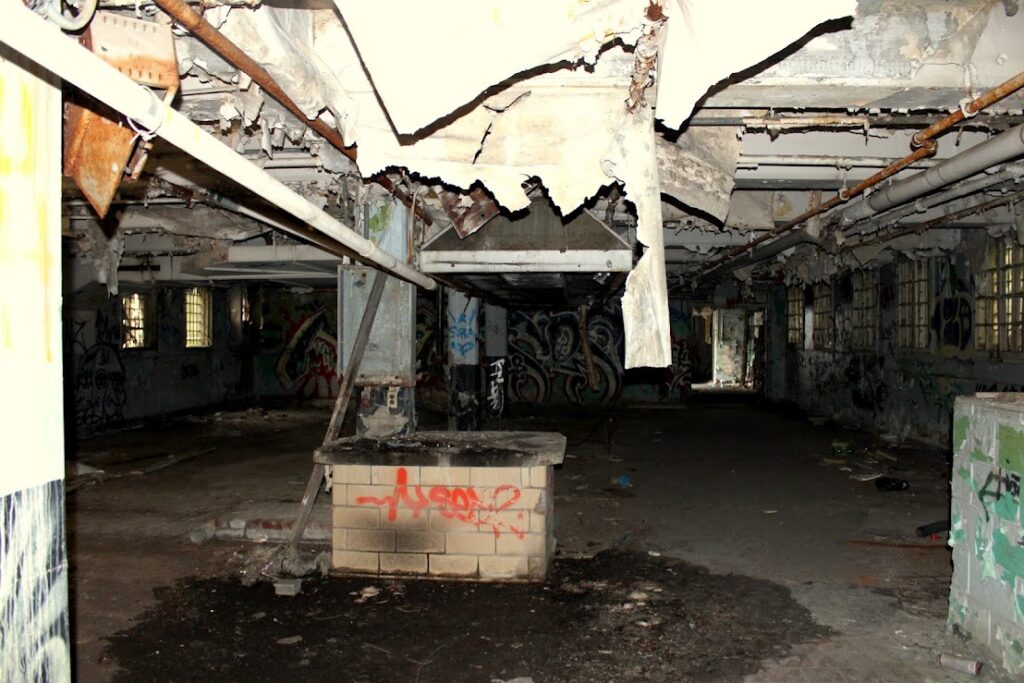

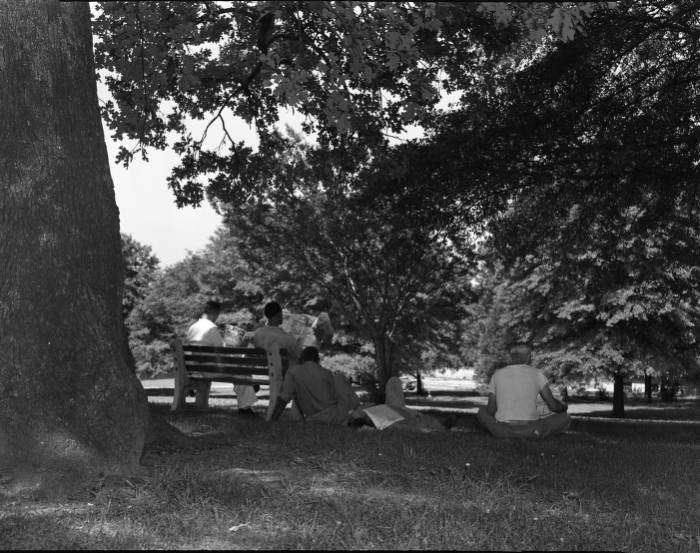
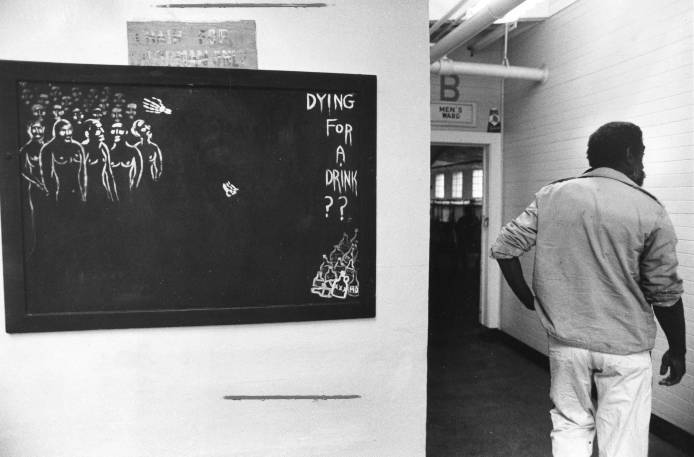
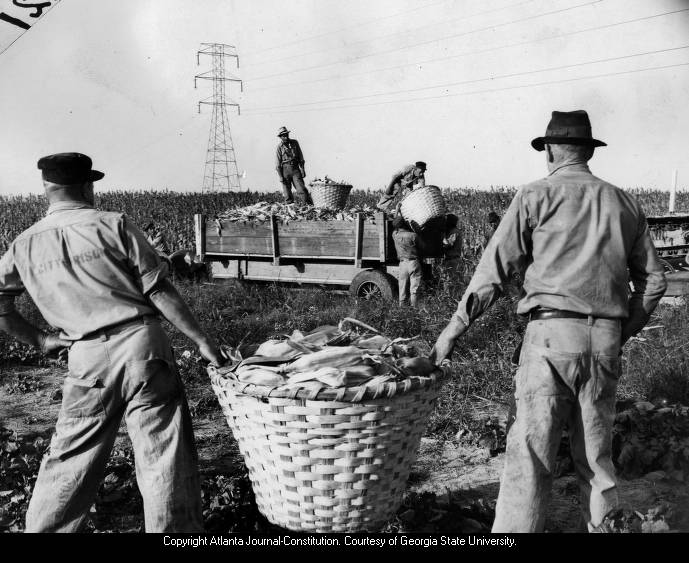
| Number | Citation APA |
| 1 | Johnson, R., Ramsey-White, K., & Fuller, C. H. (2016). Socio-demographic differences in Toxic Release Inventory siting and emissions in metro Atlanta. International Journal of Environmental Research and Public Health, 13(8), 747. https://doi.org/10.3390/ijerph13080747 |
| 2 | Stonecrest residents stage protest against Metro Green Recycling plant. (2020, August 11). On Common Ground News – 24/7 Local News. https://ocgnews.com/stonecrest-residents-stage-protest-metro-green-recycling-plant/ Hansen, Z. (2021, September 16). Judge orders work to stop at controversial Stonecrest recycling plant. Super District 7 Commissioner – Lorraine Cochran Johnson. https://commissionerlorrainecochranjohnson.com/portfolio/judge-orders-work-to-stop-at-controversial-stonecrest-recycling-plant/ |
| 3 | Hoffman, J. S., Shandas, V., & Pendleton, N. (2020). The effects of historical housing policies on resident exposure to intra-urban heat: A study of 108 US urban areas. Climate, 8(1), 12. https://doi.org/10.3390/cli8010012 |
| 4 | Site, N. (n.d.). NATIONAL PRIORITIES LIST (NPL). Epa.Gov. Retrieved March 17, 2022, from https://semspub.epa.gov/work/HQ/400980.pdf Monell, C. J., Cheatham, R., & Wright, P. C. (n.d.). ACTION MEMORANDUM AMENDMENT SUBJECT: Action memorandum amendment -ceiling increase request for continuation of the time-critical removal action at the Westside lead site. Epa.Gov. Retrieved March 17, 2022, from https://semspub.epa.gov/work/04/11159169.pdf |
| 5 | Robert K. Nelson, LaDale Winling, Richard Marciano, Nathan Connolly, et al. (n.d.). Mapping inequality. Richmond.Edu. Retrieved March 17, 2022, from https://dsl.richmond.edu/panorama/redlining/#loc=10/33.652/-84.273&city=atlanta-ga |
| 6 | Lane, H. M., Morello-Frosch, R., Marshall, J. D., & Apte, J. S. (2022). Historical redlining is associated with present-day air pollution disparities in U.s. cities. Environmental Science & Technology Letters, acs.estlett.1c01012. |
| 7 | Kann, D. (2022a, January 28). Health concerns grow as EPA probes metal plant next to Atlanta school. The Atlanta Journal-Constitution. https://www.ajc.com/news/health-concerns-grow-as-epa-probes-metal-plant-next-to-atlanta-school/W32YWHX6GBHWVMRSVOYMW44FCI/ Kann, D. (2022a, January 28). Health concerns grow as EPA probes metal plant next to Atlanta school. The Atlanta Journal-Constitution. https://www.ajc.com/news/health-concerns-grow-as-epa-probes-metal-plant-next-to-atlanta-school/W32YWHX6GBHWVMRSVOYMW44FCI/ |
| 8 | Gustafson, S. (2013). Displacement and the racial state in Olympic Atlanta 1990–1996. Southeastern Geographer, 53(2), 198–213. https://doi.org/10.1353/sgo.2013.0016 Carlisle, L. (2021, March 15). Unwavering, unyielding, uncompromising: Ethel Mae Matthews. Atlanta History Center. https://www.atlantahistorycenter.com/blog/unwavering-unyielding-uncompromising-ethel-mae-matthews/ |
| 9 | Sack, K. (1996, July 20). ATLANTA: DAY 1;Promised renewal has been less than Olympian. The New York Times. https://www.nytimes.com/1996/07/20/sports/atlanta-day-1-promised-renewal-has-been-less-than-olympian.html Diedrick, K., & Le Dantec, C. A. (2017). Atlanta’s Westside residents challenge the rules of sport mega-development. Third World Thematics A TWQ Journal, 2(1), 54–68. https://doi.org/10.1080/23802014.2017.1367261 |
| 10 | DPH. (2020). 2020 GEORGIA DATA SUMMARY | ASTHMA IN ADULTS. http://file:///C:/Users/14047/Downloads/2020%20Georgia%20Adult%20Asthma%20Data%20Summary.pdf |
| 11 | Paget-Seekins, L. (2013). Atlanta: Scarcity and abundance. In Megacity Mobility Culture (pp. 149–160). Springer Berlin Heidelberg. |
| 12 | Vargo, J., Stone, B., Habeeb, D., Liu, P., & Russell, A. (2016). The social and spatial distribution of temperature-related health impacts from urban heat island reduction policies. Environmental Science & Policy, 66, 366–374. https://doi.org/10.1016/j.envsci.2016.08.012 |
| 13 | Okotie-Oyekan, A. O. (2021). PLACE-MAKING AND PLACE-TAKING: AN ANALYSIS OF GREEN GENTRIFICATION IN ATLANTA, GEORGIA [Oregon]. https://scholarsbank.uoregon.edu/xmlui/bitstream/handle/1794/26846/OkotieOyekan_oregon_0171N_12960.pdf?sequence=1 |
| 14 | Atlanta zoning districts -complete listing. (n.d.). Atlantaga.Gov. Retrieved March 17, 2022, from https://www.atlantaga.gov/home/showdocument?id=2173 District, B. O. (n.d.). BELTLINE OVERLAY DISTRICT Z-06-121 beltline zoning overlay district regulations CITY OF ATLANTA department of planning & community development. Atlantaga.Gov. Retrieved March 17, 2022, from https://www.atlantaga.gov/home/showdocument?id=1674 Keenan, S. (2022, March 23). Peoplestown project puts Beltline halfway to affordable housing goal, but more units needed. Atlanta Civic Circle. https://atlantaciviccircle.org/2022/03/23/peoplestown-project-puts-beltline-halfway-to-affordable-housing-goal-but-more-units-needed/ |
| 15 | Sidik, S. M. (Febuary 2 2022). MSN. Msn.Com. https://www.msn.com/en-us/news/us/trees-are-more-than-scenery-theyre-a-social-justice-issue/ar-AAToVWR McDonald, R. I., Biswas, T., Sachar, C., Housman, I., Boucher, T. M., Balk, D., Nowak, D., Spotswood, E., Stanley, C. K., & Leyk, S. (April 28, 2021). The tree cover and temperature disparity in US urbanized areas: Quantifying the association with income across 5,723 communities. PloS One, 16(4), e0249715. https://doi.org/10.1371/journal.pone.0249715 |
1) Toxic Release Inventories
Summary
This Study by Ryan Johnson, Kim Ramsey-White, and Christina H. Fuller investigates the history and outcomes of companies in the metro Atlanta area which are considered, by the EPA, to be TRI’s. Toxic release inventories, or TRI’s, are companies which produce more than 25,000 pounds of toxic waste a year and/or companies that handle 10,000 pounds of toxic waste a year(Johnson et. al, 2016). In this study, they considered race and income to test for correlation with the increase of TRI’s in Atlanta, since previous studies have shown that TRI’s tend to be localized in urban areas(Johnson et. al, 2016). This study also looks at air quality as a dependent variable of race and income.
The data on race and income comes from census data from 2000. The data on female graduation rates comes from the 2000 census as well. The data on toxic release inventories comes from the EPA. The data on air quality complaints come from the EPA as well. They are from 2006-2011. The results show that lower income households between $22,500 and $50,000 are a strong predictor of an increase in sites that release toxic waste. Additionally, 59.3% of TRI facilities are located in lower middle class neighborhoods.
Statistics and Results
This map shows, visually that many toxic sites are located in neighborhoods with a non-White population greater than 30.1%.
This map shows, visually, that neighborhoods with a female graduation rate higher than 36.5% tend to have fewer toxic waste sites.
This study also quantified how income and race predict the increase of TRI’s and how strong this prediction is. Here is the chart:
What this chart means: The adjusted odds ratio looks at the change odds of an increase in TRI facilities vs the change in percentage of population. The odds ratio for income looks at the odds of a TRI facility being in a neighborhood of some income range vs the odds of a TRI facility being in a neighborhood where the median income is greater than $77,500. Once income is accounted for, race is no longer a great predictor of TRI facility placement. However, the raw data suggests that race is correlated with TRI facilities. This implies that lower income neighborhoods are more likely to be Blacker. The question that isn’t answered: are these factors connected? Does racism, both system and individual, push Black neighborhoods into the lower income category? If so, is that different from purposefully targeting Black residences with toxic facilities? You have to decide the philosophical answers.
2) Stonecrest and Metro Green
Summary
These two sources are from local news and the website of Super District 7 Commissioner, Lorraine Cochran-Johnson. She is running for reelection in December of 2022 and the release of this article was September 2021. This was probably ont a PR stunt for reelection. The article on Lorraine Cochran-Johnson’s website was written by Zach Hansen. This story has also been covered by the AJC if you want to find more material.
The story: a concrete recycling plant called Metro Green is trying to build an industrial facility close to residential neighborhoods in Stonecrest. After successfully beginning construction in 2017, they have temporarily halted construction because of protests by citizens which led to a court ordered construction stop(Common Ground News, 2020). The odd part of the story is the way that Metro Green got approval to begin construction. They were denied by city council leaders on the basis that these leaders did not have the authority to grant approval. Then they went to Dekalb county which denied them approval on the basis that they could not comply with the Dekalb Waste Management Plan(Hansen, 2021). However, after going back to Stonecrest officials Metro Green allegedly got approval(Hansen, 2021). Which begs the question; what happened? How did a company that could not comply with Dekalb’s waste management plan get approval? And why did they have the confidence to begin construction? One conclusion, Metro Green fully expected to get away with this construction. I make this conclusion on the basis that they sunk all of this money into beginning construction. Additionally, Stonecrest is almost 90% Black but middle income. The ability of companies to target Black neighborhoods as building sites is a mechanic in creating the gap in exposure to toxic waste and TRI facilities.
3) Redlining and Temperature Disparity
Summary
This study by Jeremy S. Hoffman, Vivek Shandas, and Nicholas Pendleton look at redlining and temperature. It is attempting to relate the results of today’s results in temperature distribution within cities across America with the risk assessment for loans of the HOLC(Home Owner’s Loans Corporation). There are four categories for loans. “Best”, “Still Desirable”, “Definitely Declining”, and “Hazardous”. They were categorized A, B, C, and D zones in that order(Hoffman et. al). This study looks at where these neighborhoods are now, temperature wise and tree wise, as a whole. There are four regions observed; Midwest, West, Northeast, and South. They cover HOLC A,B,C, and D zones for 108 cities(Hoffman et. al). Their method of data collection for heat and tree coverage come from satellite data. The satellite data on heat and tree distribution is overlaid with HOLC map data. It is map to map data so they have to line up each of the maps to make the accuracy of the satellite data precise.
Statistics & Results
LST stands for land surface temperature. In the South, the distribution between A and D zones is the most extreme. In the South, temperature wise, the upper 75% of A zones are cooler than all other zones anywhere. Additionally, the middle 50% of B zones are cooler than any of the middle 50% of C & D zones. This is practically the definition of exponential: each zone has a coolness ratio to the zone below and above it. What this means is that the disparity itself increases as you go from D to A.
Tree canopy percentage is also quite different. The middle 50% of A zone neighborhoods have more tree canopy than the middle any of the 50% of C & D zones. The upper 50% of B zones have more tree canopy than 75% of C & D zones. Clearly, redlining has an affect on housing conditions and neighborhood conditions now even though it happened many years ago.
4) Vine City and Lead
Summary
These two government documents pertain to the lead in the soil of the Vine City area (near Mercedes Benz stadium and Spelman College, and Clark Atlanta). Fulton county. Two big takeaways from these sources. “Historically, dozens of foundries operated in Atlanta with documentation going back to the late 1800s.”(EPA). Additionally, there were lead levels double, triple, and even quadruple that of the recommended EPA limit. These levels probably haven’t been going up since the closure of these facilities. And yet, an outside research student from Emory found this before the EPA. The EPA had done nothing with this site prior. These dangerous levels have likely been present since the redlining, in theory. Using the redlining map from blog post 5, one can see that Vine City was redlined(Robert et. al). This story is ongoing. As of April, 2022, the story is relevant.
Results:
5) Which neighborhoods were redlined?
Summary
In your investigations into environmental racism, disparities in toxic sites and tree cover, the issue of classism and owning property come into play. Redlining has been a historical theme in property allocation. It is the act of using maps made by the Home Owners Loan Association to distribute loans.
This is a map that puts together documents from the Home Owner Loan Association from 1935-1940. The HOLC assessed neighborhoods and households on the basis of value. There were four categories. A:“Best”, B:“Still Desirable”, C:“Definitely Declining”, and D:“Hazardous”(Robert et. al). These decisions were made from the perspective of a racist, rich homeowner. Objectively. Value was determined to be lower when in a neighborhood with more “negro” and “working class” people(Robert et. al). Why did the zones matter? They determined who should receive loans. “Hazardous” refers to what it is to give people in these zones loans. By hovering over the grade column of the map key, you can see the descriptions of each zone.
The decision making process of neighborhood grade was explicitly racist. The guide for HOLC agents describes the “infiltration of foreign-born, Negro, or lower-grade population” as possible reasons to assign a lower grade to a neighborhood. Homes with Black residents decreased property value on the basis that a White person would be less likely to buy houses near them. Homes of working class residents decreased property values around them on the basis that wealthy people would not value those properties. It was a matter of perspective. Wealthy White people sought to move next to wealthy White people. The inability to get loans makes moving out of a D zone to a C or B zone almost impossible. Not only that, many policies and companies treat properties in C & D zones as less important. For example, a highway is more likely to cut through a D zone than an A zone. This creates ecological differences between each neighborhood type and further decreases property values in C & D zones.
Being able to identify which neighborhoods suffered from redlining is important when investigating contamination in a specific area.
6) Redlining and Air Pollution
Summary
This study by Haley M. Lane, Rachel Morello-Frosch, Julian D. Marshall, and Joshua S. Apte looks to study the connection between redlining and air pollution exposure as well as race and air pollution exposure. They look at the presence of NO2 and PM2.5 in the air using air pollution data from 2010 and a model developed by the Center for Air, Climate, and Energy Solutions (CACES) to predict where air pollution will go.
Results & Statistics
These maps show both a correlation between redlining and race, air pollution and race, and air pollution and redlining. Generally, NO2 is concentrated in the city’s busiest parts but PM2.5 is distributed more widely in redlined areas. Side note: Decatur, which is east of Atlanta, has been gentrifying for a while. As a result, there is a low POC rate in some low grade areas.
This shows that across the US, not just in Atlanta, redlining is associated with more exposure to air pollution. Black and Brown residents are most at risk of being exposed to PM2.5 while any BIPOC group is more at risk of being exposed to NO2 than White groups.
7) Crawford Middle School
Summary
These two articles follow the story of Crawford Middle school. They are both by Drew Kann. Jan 10, 2022, the EPA ordered that a waste site owned by TAV Holdings Inc. stop functions immediately. They were worried about danger to human health in the area (Kann, 2022). Professor Eri Saikawa of Emory University, who four earlier identified an EPA superfund site, believed that this site was also a potential candidate stating that the contamination was “both in the soil and in the water”(Kann, 2022). However, after testing, the EPA did not find that the contamination leaked over into the school zone. As of now, the EPA needs to do further testing. The issue is, some samples from the creek had lead levels 13 times as large as the maximum EPA recommendations. And that creek goes beyond the school. It is still entirely possible that these heavy metals are infiltrating residents’ yards and bodies. Currently, the factory is still operating but not taking in any more scrap metal. I want to include these articles because in the future, this will be history. It may turn out that there were lead levels too high near the school and we didn’t test enough. Maybe, if the factory is allowed to continue processing metal, lead contamination will reach school property. We need preventative actions.
8) The Olympics
Summary
In preparation for the Olympics, the city removed residents and homeless alike through various laws and reconstruction. When it came to laws that sought to remove homeless people, Atlanta was eventually ordered by a federal court to “‘cease and desist’ the pattern and practice of arresting homeless people without probable cause”(Gustafson, 2013) after the case of Williams vs. The City of Atlanta (Gustafson, 2013).
Many of the homes in Techwood park were destroyed before the olympics. There were ninety seven buildings. One building was beyond repair. Seven eighths of the buildings were in good condition. The reason they were destroyed was to make Atlanta look wealthier during the olympics. Within this source, there is a great bibliography to investigate further into the displacement caused by the Olympics and other policies in Atlanta. The way that this is relevant to disparities in ecology is in the ability to move low income communities around. The Centennial Olympic Park is not a green space for residence in the oldest federally subsidized housing district if the residents are removed.
Even though the residents of Techwood park did not manage to keep their homes, they fought to do so. Many protests against the Olympic “renovations” took place. One advocate was Ethel Mae Matthews. Material on her career is in the second source.
9) Lessons From the Olympics
Summary
In the New York Times’s review of Atlanta’s renovation, they go over the fear of gentrification, the lack of complete renovation, and for a few paragraphs, go over the concerns that all of this renovation wasn’t great for the people living there. An interesting quote from former Mayor Jackson: “If you’re going to have a neighborhood invasion and get nothing for it, there are going to be protests”(Sack, 1996).
Did we learn from the Olympics? The academic journal by Kate Diedrick and Christopher A. Le Dantec looks into building development today and how it is connected to the 1996 Olympics. They collected 62 local interviews to build an understanding of how the community views these projects. Large construction projects hurt the environment in the neighborhoods around them and displace residents who lived on the land.
10) Disparities in Asthma Rates in Georgia
Summary
This is a document from the Georgia Department of Public Health
Statistics & Results
Across all age groups, Black Georgians suffer the most from asthma hospitalizations.
In the Southern part of Atlanta, asthma rates are higher. This lines up with redlining maps. Additionally, they are right next to areas without high Asthma rates. This indicates that something is at play here.
11) Where the Air Pollution Disparities Come From
Summary
Megacity Mobility Culture published by Springer goes into how roads are laid in megacities. After White flight, some companies set up shop in the city where property was cheaper and roads were abundant. However, many high paid workers had moved to the suburbs. “Mobility in Atlanta suffers from an abundance of vehicles on the roads and a scarcity of public transport services. Atlanta built roads to serve its low-density suburbs, and refused to invest in public transport.”(Paget-Seekins, 2013) The book goes into how redlined neighborhoods were used as pathways for highways resulting in higher air pollution from traffic and dirty soil from construction.
12) Heat Disparities in Cities
Summary
This study by Dr. Jason Vargo, Dr. Brian Stone, Dana Habeeb, Dr. Peng Liu, and Dr. Armistead Russell looks at heat exposure in cities by race. The focus on urban heat is because “many large cities are warming at a rate double that of the planet as a whole”(Vargo, et. al). They sought to simulate how different heat prevention interventions would save lives. And how many lives they would save. Harm reduction impacts those who are harmed most and this study believes that harm reduction for harm caused by higher temperatures would help impoverished and Black communities the most.
Results & Statistics
This shows that those who are older benefit most from all three intervention plants in Atlanta. Implying that they are more at risk.The measure on the right is deaths per 100,000 per year.
Those who make below $30,000 are at a much higher risk.
Non-White residents are at a higher risk.
13) Green Gentrification
Summary
Place-Making and Place-Taking: An Analysis of Green Gentrification in Atlanta, Georgia. This thesis paper by Aimée Oyinlade Okotie-Oyekan is an overview of how improving ecology in low-income communities leads to gentrification. There are many nuances. The paper looks into methods of improving a community’s ecology without driving up the price of homes. It focuses on Atlanta. Specifically, Grove Park. An upper North-Western section of Atlanta with majority Black residents. In Grove Park, 13% of residents live in poverty and 38% rent their living spaces. This is at least 51% of the population at extremely high risk of being outcompeted for housing. Not only that, these groups have been shown to be the most at-risk for harm from their environment. And now they are being kicked out when help arrives. This process is how those with lower incomes must live in a neighborhood with fewer trees, higher temperatures, etc. They are forced out of neighborhoods that do. Not only does this thesis talk about the present and future, it discusses the past. Things like the emancipated slaves who carved out the BellWood Quarry. They go over the beltline. “[H]ousing values rose between 17.9 percent and 26.6 percent more for homes within a half-mile of the Beltline than elsewhere”(Okotie-Oyekan, 2021). The thesis also takes a philosophical approach to if we can/should we own a lot of land. How much of “community” is based around public spaces.
14) Green Gentrification through the Beltline
Summary
The Atlanta Beltline plans to wrap around Atlanta. It would take the path of an abandoned trolly line and turn it into a pedestrian path. This would go through some currently low-income areas. The beltline is trendy and increases the value/prices of property around it. Two of these sources are government documents which show how loopholes are created that allow gentrification. The second is a criticism of the lack of affordable housing in the face of an increase in affordable housing. My hometown, Decatur, did the same thing. My Mum has been on the affordable housing task force for years. The city waited till the last minute to put in more affordable housing. As a result, there is too little affordable housing, and it is too late to add more. The same issue is happening with the beltline.
There is a commission who wants to create a beltline zoning district for business. They created a presentation to outline the policies and regulations of the proposed additional zoning district. In one slide, they address the fact that residential areas may be affected by the bletine. Their proposed solution is that “R-1 through R-5”(District, n.d.) will not be under new beltline zoning, this will still leave RG-1 through RG-6 open to zoning from the city because of the beltline(Atlanta zoning districts -complete listing, n.d.). Homeowners are protected while renters are not.
However, there is some hope. Andre Dickens wants to increase the rate at which affordable housing is being built in the Beltline tax district and the goal is to have 5,600 affordable housing units in the beltline district by 2030. Beyond that, Andre Dickens suggested adding 5,000 more affordable units by 2030.
15) Tree Cover in America
Summary
This study by Robert I. McDonald, Tanushree Biswas, Cedilla Sachar, Ian Housman, Timothy M. Boucher, Deborah Balk, David Nowak, Erica Spotswood, Charlotte K. Stanley, and Stefan Leyk look at how tree coverage and wealth are correlated in urban areas where tree coverage is a more scarce resource than in rural areas. They use satellite data and census data to get tree coverage and income. In the U.S. high income blocks have 60 million more trees than low income blocks(McDonald, et. al). It would take $17.6 Billion to close this gap. Trees are valuable. In addition to this study, I included an article by Saima May Sidik about how trees contribute to the physiological health of those around them. Trees are more than just plants. Nature is an ailment to many a concrete born disease. Immune support, blood pressure, and anxiety become healthier as tree presence increases. A lack of trees isn’t a lack of a privilege, it is the lack of basic health support. It is comparable to living in polluted areas. It is not an acceptable status quo.
Results & Statistics
In our country, the reality is that nothing isn’t monetizable. Living in basic, humane conditions is for sale implying it must be paid for. It is clearly not a right. And by this graph, the privilege is clearly sought after.